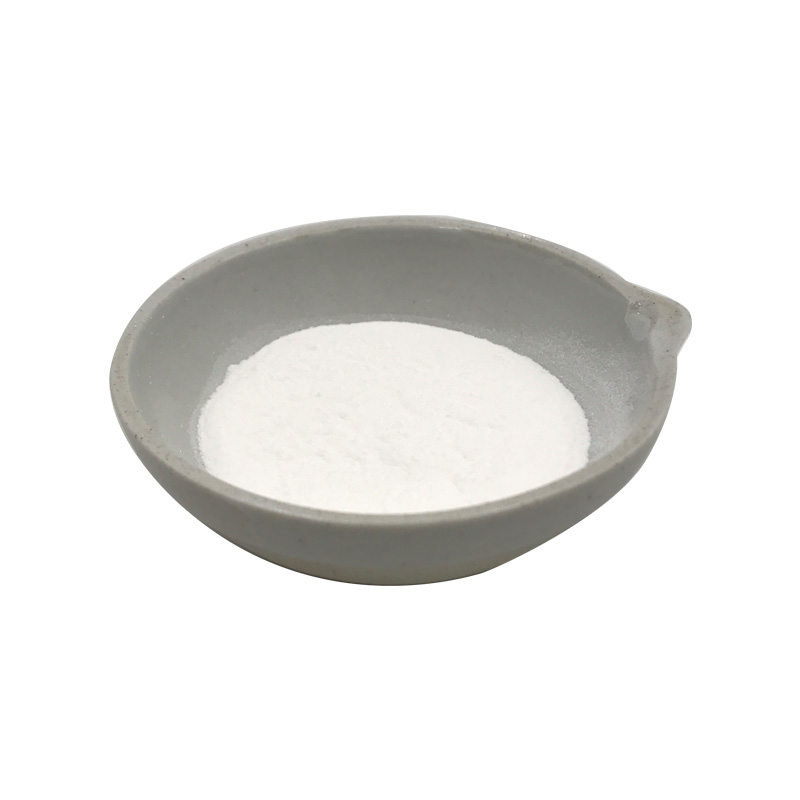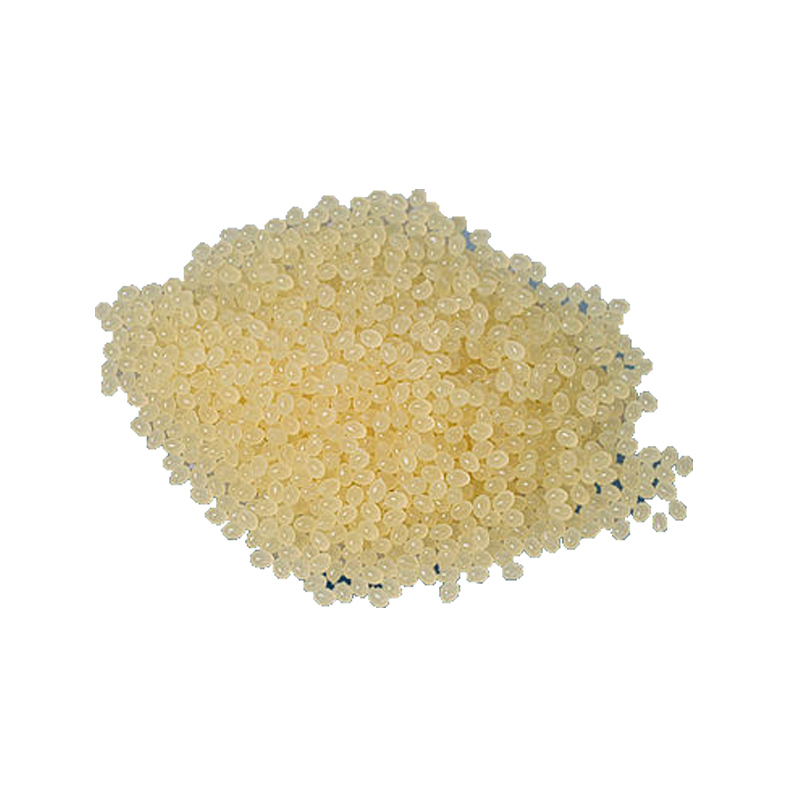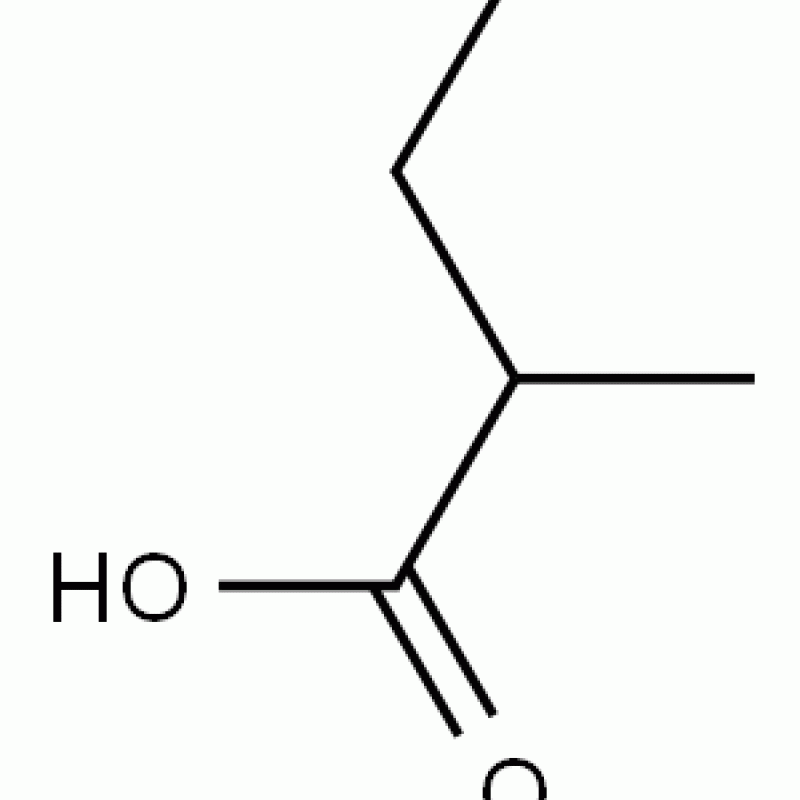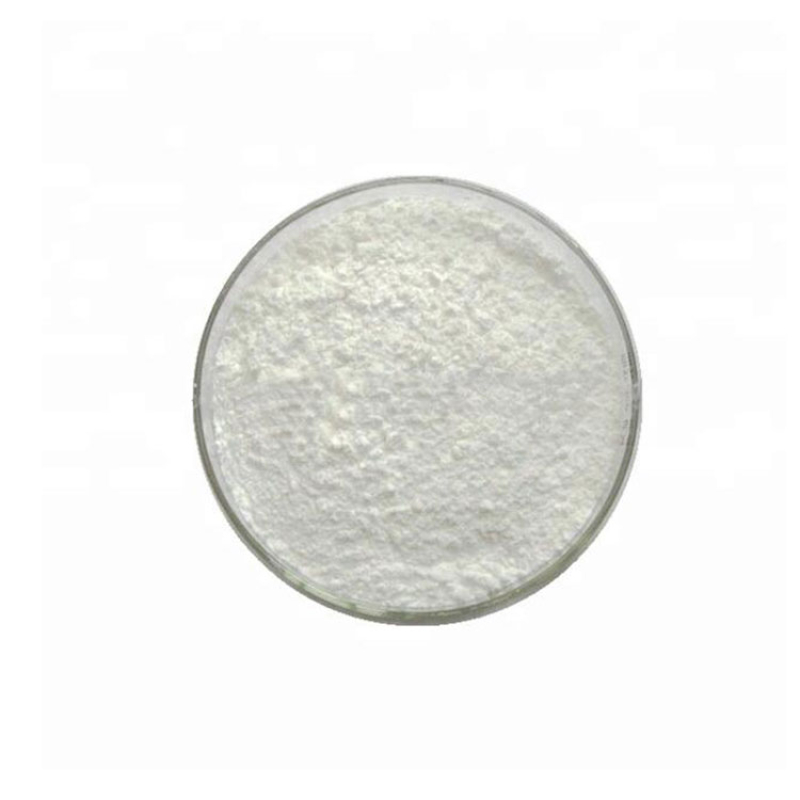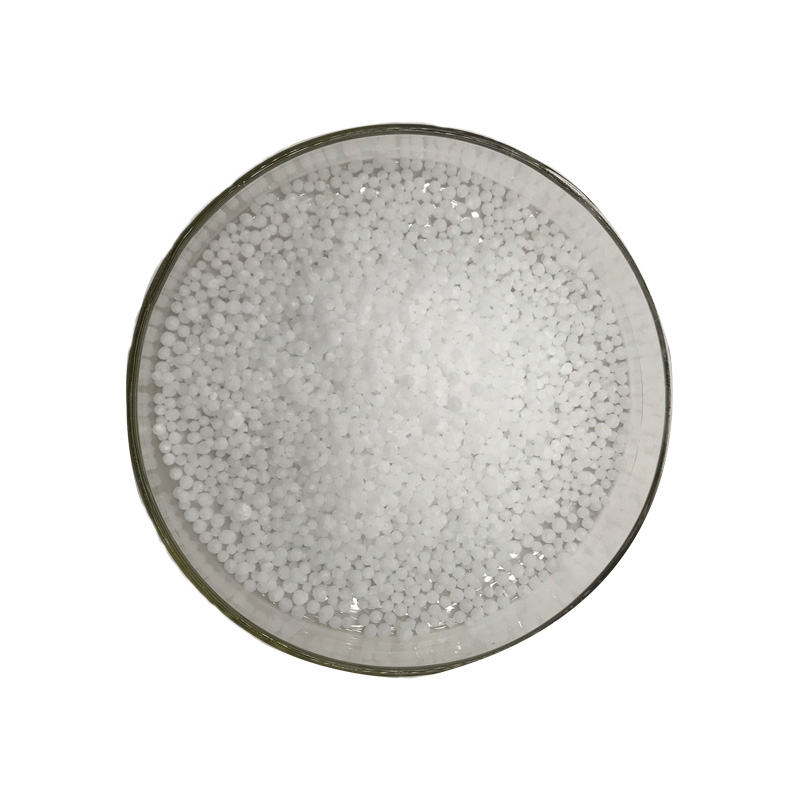Products Description of POLY(METHYLSILSESQUIOXANE) CAS#68554-70-1White powderPOLY(METHYLSILSESQUIOXANE) Chemical Propertiesdensity 1,08 g/cm3refractive index 1.42Fp >121°Csolubility Insoluble in water.form SolidSpecific Gravity1.08color Clear. White.EPA Substance Registry SystemSilsesquioxanes, Me (68554-70-1)Safety InformationRisk Statements 36/37/38Safety Statements 26-36/37/39TSCA YesFactory and Equipment ShowFast delivery timeInventory 2-3 working days New production 7-10 working days
Contacter maintenant
Products Description of Poly(tetrahydrofuran)CAS#25190-06-1Polytetrahydrofuran is a white waxy solid that is easily soluble in alcohols, esters, ketones, aromatic hydrocarbons and chlorinated hydrocarbons, but insoluble in aliphatic hydrocarbons and water.
Contacter maintenant
Products Description of Poly(dimethylsiloxane)CAS#9016-00-6Depending on the relative molecular mass, the appearance of polydimethylsiloxane ranges from colorless and transparent volatile liquid to extremely high viscosity liquid or silica gel. It has physiological inertness, good chemical stability, electrical insulation and weather resistance, a wide viscosity range, a low freezing point, a high flash point, good hydrophobicity, and high shear resistance. It can be used for a long time at a temperature of 50 to 180°C.
Contacter maintenant
POLY(METHYLSTYRENE-CO-INDENE) CAS#69430-35-9It has good thermal stability and chemical stability, and is not prone to chemical reactions under normal conditions. However, under extreme conditions such as high temperature, strong acid, and strong alkali, its chemical structure may be affected to a certain extent.
Contacter maintenant
Products Description of Poly(methylhydrosiloxane) CAS#63148-57-2Polymethylhydrogensiloxane is a silicone oil used in biology and chemistry. Under the action of metal salt catalysts, it can cross-link into a film at low temperature, forming a waterproof film on the surface of various materials.
Contacter maintenant
Products Description of Poly(ethylene glycol) distearate CAS#9005-08-7This product is a white solid, soluble in isopropanol, glycerin, gasoline solvents, dispersed in water, melting point 35 ~ 37 ℃.Poly(ethylene glycol) distearate Chemical PropertiesMelting point 35-37 °CFp >230 °FOdorat 100.00?%.
Contacter maintenant
Products Description of Poly(maleicanhydride-acrylicacidcopolymer) CAS#26677-99-6 Solvent polymerization: Copolymerization in benzene, toluene, xylene, trimethylbenzene, ethylbenzene, isopropylbenzene, butylbenzene or their mixtures can produce white, brittle solid polymers with a relative molecular mass of about 4000.
Contacter maintenant
Products Description of Poly(acrylic acid)CAS#9003-1-4Acrylic resin (MethylMethacrylateResin), commonly known as organic glass, is a polymer compound made from methyl methacrylate. Commonly used synthesis methods include anionic polymerization, solution polymerization, bulk polymerization, and suspension polymerization. In addition, the resin has excellent properties such as easy coloring, light weight, not easy to break, and good processing performance. Therefore, it is often used as a substitute for glass, optical lenses, lenses, etc.
Contacter maintenant
Products Description of Poly(dipropyleneglycol)phenyl phosphite CAS#80584-86-7Colorless liquidFactory and Equipment ShowFast delivery timeInventory 2-3 working days New production 7-10 working days
Contacter maintenant
Products Description of Poly(L-lysine hydrobromide) CAS#25988-63-0Antioxidants, Chelating Agents, PreservativesPoly(L-lysine hydrobromide) Chemical Propertiesstorage temp. 2-8°Cform lyophilized powderStability:Stable. Incompatible with strong acids, strong bases. Safety InformationWGK Germany 3F 3-10Product Application of Poly(L-lysine hydrobromide) CAS#25988-63-0Only a trace amount of polylysine needs to be added to food to be effective, and it will not affect the taste of the food. It can be used as a natural preservative for food.
Contacter maintenant
Products Description of Poly(methyl methacrylate)CAS#9011-14-7Polymethyl Methacrylate (PMMA) is a high molecular polymer, also known as acrylic or organic glass. It has the advantages of high transparency, low price, and easy machining. It is a commonly used glass substitute material.On October 27, 2017, the World Health Organization's International Agency for Research on Cancer published a preliminary list of carcinogens for reference.
Contacter maintenant
Products Description of POLY(ANTIMONY ETHYLENE GLYCOXIDE) CAS#29736-75-2White crystalline solid, non-toxic and odorless, decomposes in contact with moist air.POLY(ANTIMONY ETHYLENE GLYCOXIDE) Chemical PropertiesMelting point >100°C (dec.)Boiling point 267.3℃[at 101 325 Pa]density 1[at 20℃]Fp >110°CWater Solubility 400ng/L at 20℃Hydrolytic Sensitivity7: reacts slowly with moisture/waterEPA Substance Registry System2,5,7,10,11,14-Hexaoxa-1,6-distibabicyclo[4.4.4]tetradecane (29736-75-2) Safety InformationRisk Statements 20/21/22Safety Statements
Contacter maintenant
Products Description of Poly(vinyl alcohol)CAS#25213-24-5White powderPoly(vinyl alcohol) Chemical PropertiesMelting point >300 °CEPA Substance Registry SystemVinyl acetate vinyl alcohol polymer (25213-24-5)Safety InformationRisk Statements 23/24/25-36/38-39/23/24/25Safety Statements 26-36/37-45WGK Germany 1RTECS TR8100000 Factory and Equipment ShowFast delivery timeInventory 2-3 working days New production 7-10 working days
Contacter maintenant
Poly(oxy-1,2-ethanediyl), .Alpha.-Hydro-.Omega.-Hydroxy-, Mono-C12-14-Alkyl Ethers, Phosphates CAS#68511-37-5The molecular structure contains polyoxyethylene segments, hydroxyl groups, C12-14 alkyl ether and phosphate groups. This unique structure enables it to have multiple properties. It has good surface activity, can reduce the surface tension of the liquid, and play the role of emulsification, dispersion and wetting at the interface.
Contacter maintenant
POLY(DIMETHYLAMINE-CO-EPICHLOROHYDRIN) Chemical Propertiesdensity 1.1 g/mL at 25 °Crefractive index n20/D 1.427CAS DataBase Reference25988-97-0EPA Substance Registry SystemMethanamine, N-methyl-, polymer with (chloromethyl)oxirane (25988-97-0)Safety InformationHazard Codes XiRisk Statements 38-41Safety Statements 23-26-36/37/39WGK Germany 3Factory and Equipment ShowFast delivery timeInventory 2-3 working days New production 7-10 working days
Contacter maintenant
Products Description of Poly(ethylene glycol) dimethacrylateCAS#25852-47-5 Used in food, medical and health gel materials, etc.Poly(ethylene glycol) dimethacrylate Chemical PropertiesBoiling point >200 °C2 mm Hg(lit.)density 1.11 g/mL at 25 °Crefractive index n20/D 1.467Fp >230 °Fstorage temp. 2-8°Csolubility H2O: solubleform Granular Solidcolor White to off-whiteWater Solubility Soluble in water.Sensitive Moisture & Light SensitiveStability:Stable.
Contacter maintenant
POLY(ETHYLENE GLYCOL) METHYL ETHER ACRYLATE Chemical PropertiesMelting point 6-7 °C(lit.)density 1.09 g/mL at 25 °C(lit.)Fp >230 °Fstorage temp. -20°Cform Granular Solidcolor White to off-whiteWater Solubility Soluble in waterEPA Substance Registry SystemPoly(oxy-1,2-ethanediyl), .alpha.-(1-oxo-2-propenyl)-.omega.-methoxy- (32171-39-4)Safety InformationHazard Codes TRisk Statements 45-46Safety Statements 53-36/37/39-24/25-22-45WGK Germany 3TSCA YesHS Code 39072090Factory and Equipment ShowFast delivery
Contacter maintenant
Methyl Methacrylate CAS#80-62-6Methyl methacrylate is an natural compound with the system CH2=C(CH3)COOCH3. This colourless liquid, the methyl ester of methacrylic acid (MAA) is a monomer produced on a giant scale for the manufacturing of poly(methyl methacrylate) (PMMA).Methyl methacrylate is a methyl ester of methacrylic acid. It is a colourless, risky liquid with an acrid fruity odour.
Contacter maintenant
Products Description of Potassium iodide CAS#7681-11-0 Potassium iodide is an ionic compound, in which iodine ions can form dark yellow precipitated silver iodide with silver ions (decomposed by light and can be used to make high-speed photographic film), so silver nitrate can be used to test the presence of iodine ions. As a component of thyroid hormone, iodine is closely related to the basal metabolism of livestock and poultry, and participates in almost all metabolic processes.
Contacter maintenant
Products Description of Potassium phosphate monobas CAS#7778-77-0Potassium dihydrogen phosphate (monopotassium orthophosphate) is a water-soluble inorganic salt. Its standard enthalpy of formation is -376.1 kcal/mol.
Contacter maintenant
Products Description of Potassium phosphate CAS#778-53-2Potassium phosphate is a reagent with high buffering capacity, It serves as a buffering agent to regulate pH, Typically used as a component for a wide variety of media used in the culture of microorganisms, as a component in phosphate buffered saline (PBS). It occurs in several forms: monobasic, dibasic, and tribasic (K3PO4). Most pH neutral potassium phosphate buffer solutions consist of mixtures of the monobasic and dibasic forms to varying degrees, depending on the desired pH.
Contacter maintenant
Products Description of KCL CAS#7447-40-7Potassium chloride is an important fertilizer for plant growth. It has a fast fertilizer effect and can be absorbed by the soil. It is not easy to lose. Applying an appropriate amount of potassium fertilizer can make the stems of crops grow firm, prevent lodging, promote flowering and fruiting, and enhance the ability to resist drought, cold, diseases and pests. Therefore, it is of great significance to agricultural high yield.
Contacter maintenant
Products Description of Potassium phosphate CAS#778-53-2Azodicarbonamide is a synthetic chemical that exists at ambient temperature as a yellow-orange crystalline solid. Azodicarbonamide is mainly used as a blowing agent in the rubber and plastics industries in the expansion of a wide range of polymers, including polyvinyl chloride, polyolefins, and natural/synthetic rubbers.
Contacter maintenant
Products Description of ChlorphenesinCAS#104-29-0Chlorphenesin is a preservative widely used in cosmetics and is compatible with most preservatives (including potassium sorbate, sodium benzoate, methylisothiazolinone). It is white crystals, usually with a weak characteristic odor. Melting point 77.0-80.5℃. Slightly soluble in water (about 0.5%). Solubility in 95% ethanol is 5%. Soluble in ethers. Slightly soluble in fixed oils, insoluble in white mineral oil. Microbial control performance: can provide improved broad-spectrum antibacterial activity.
Contacter maintenant


